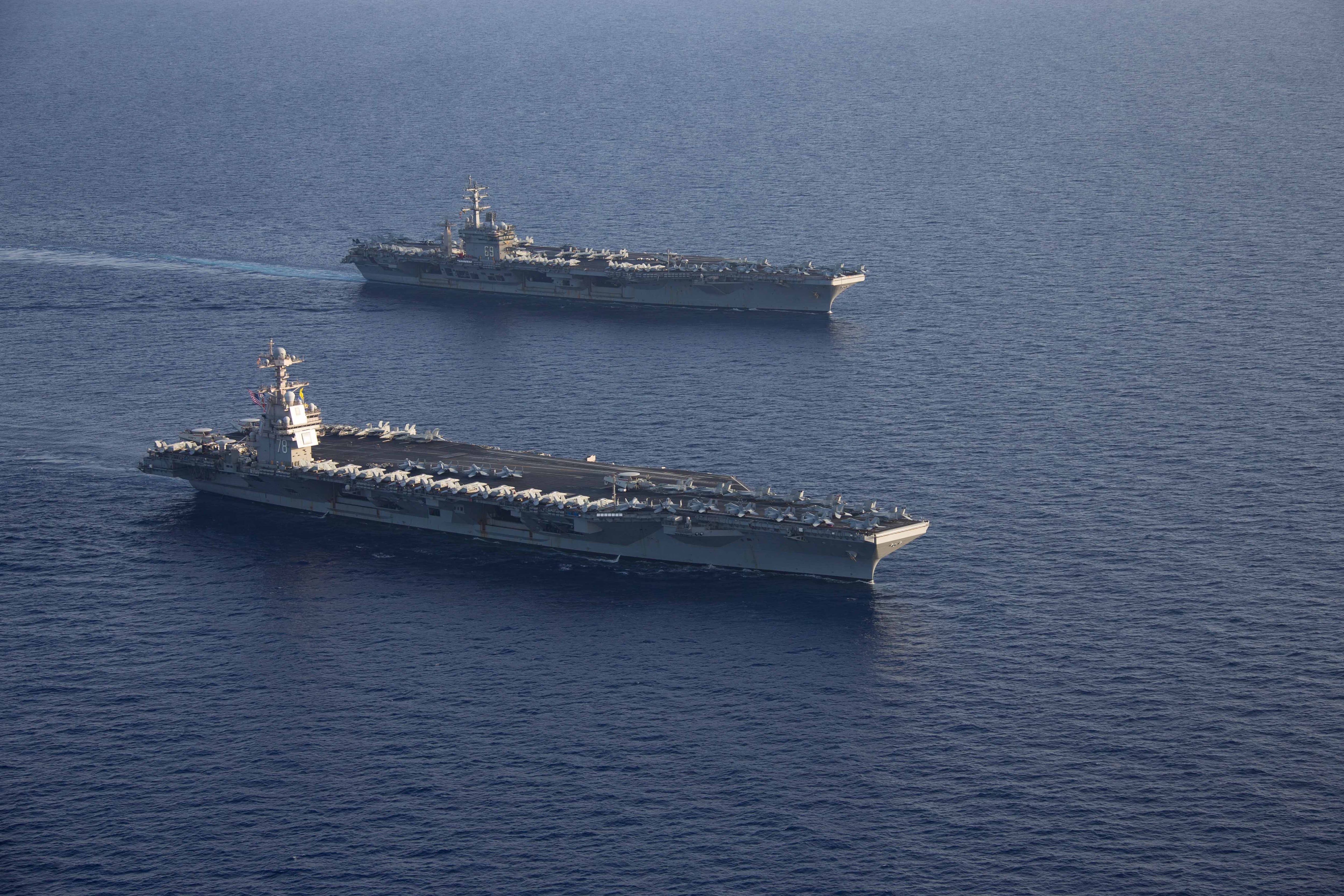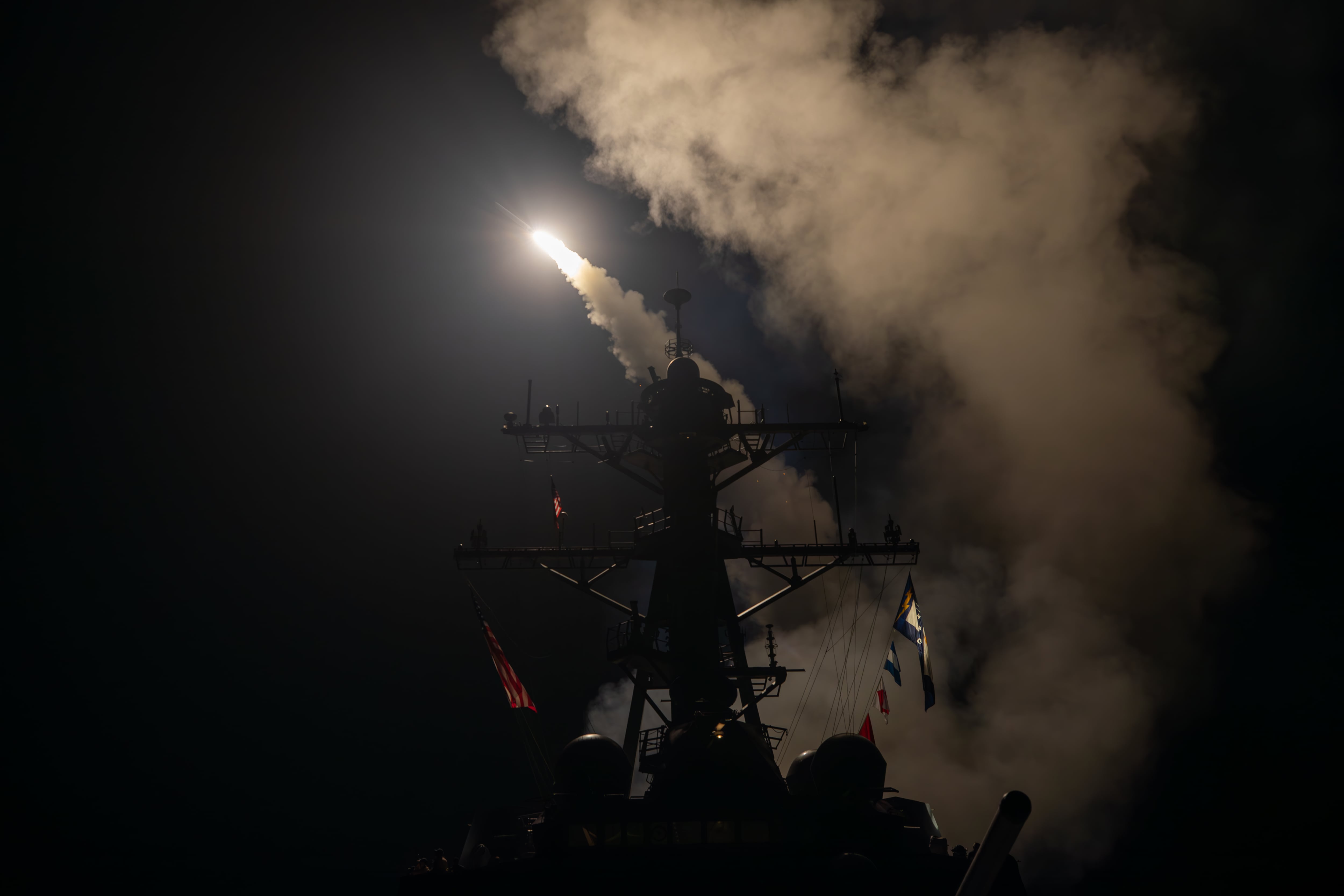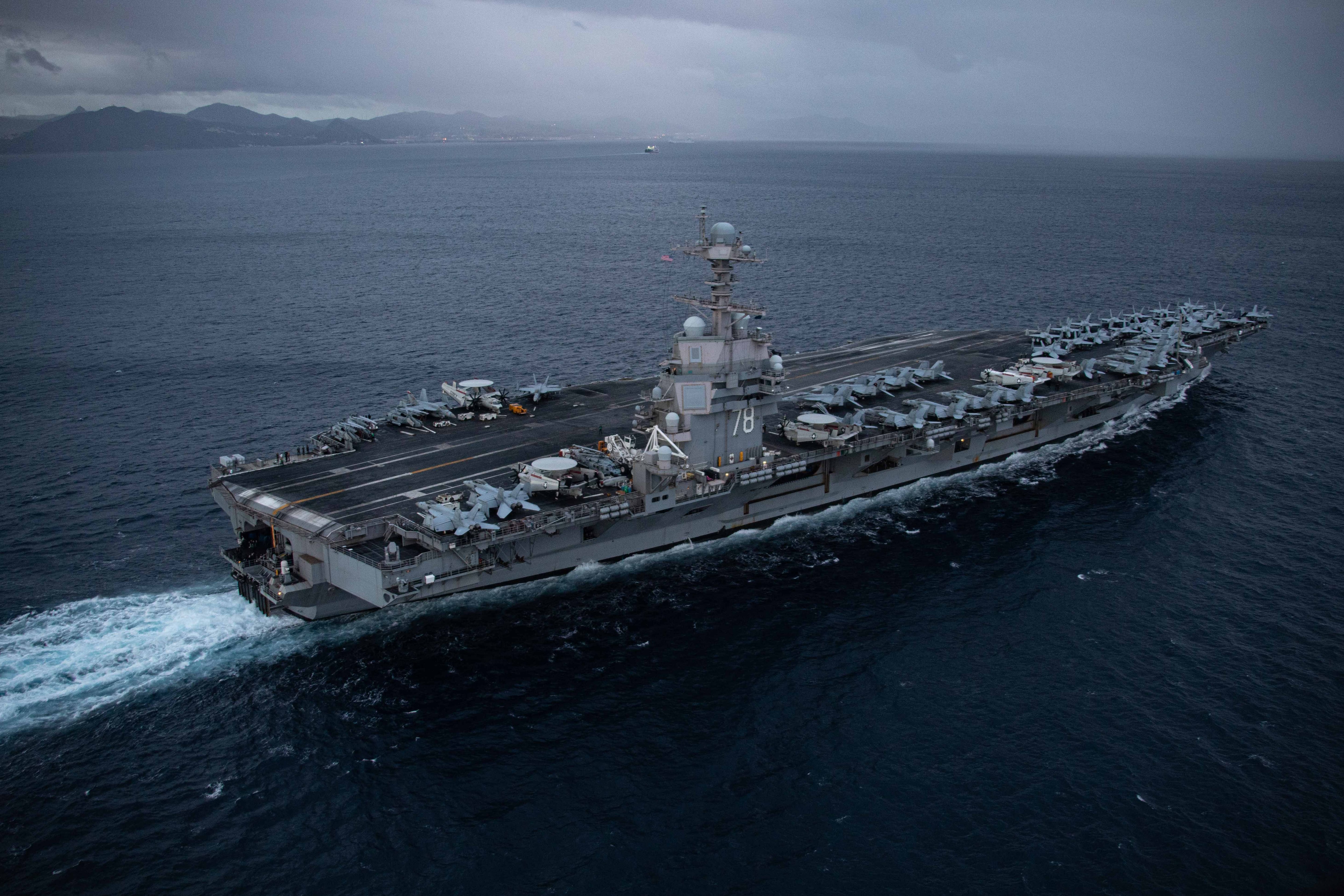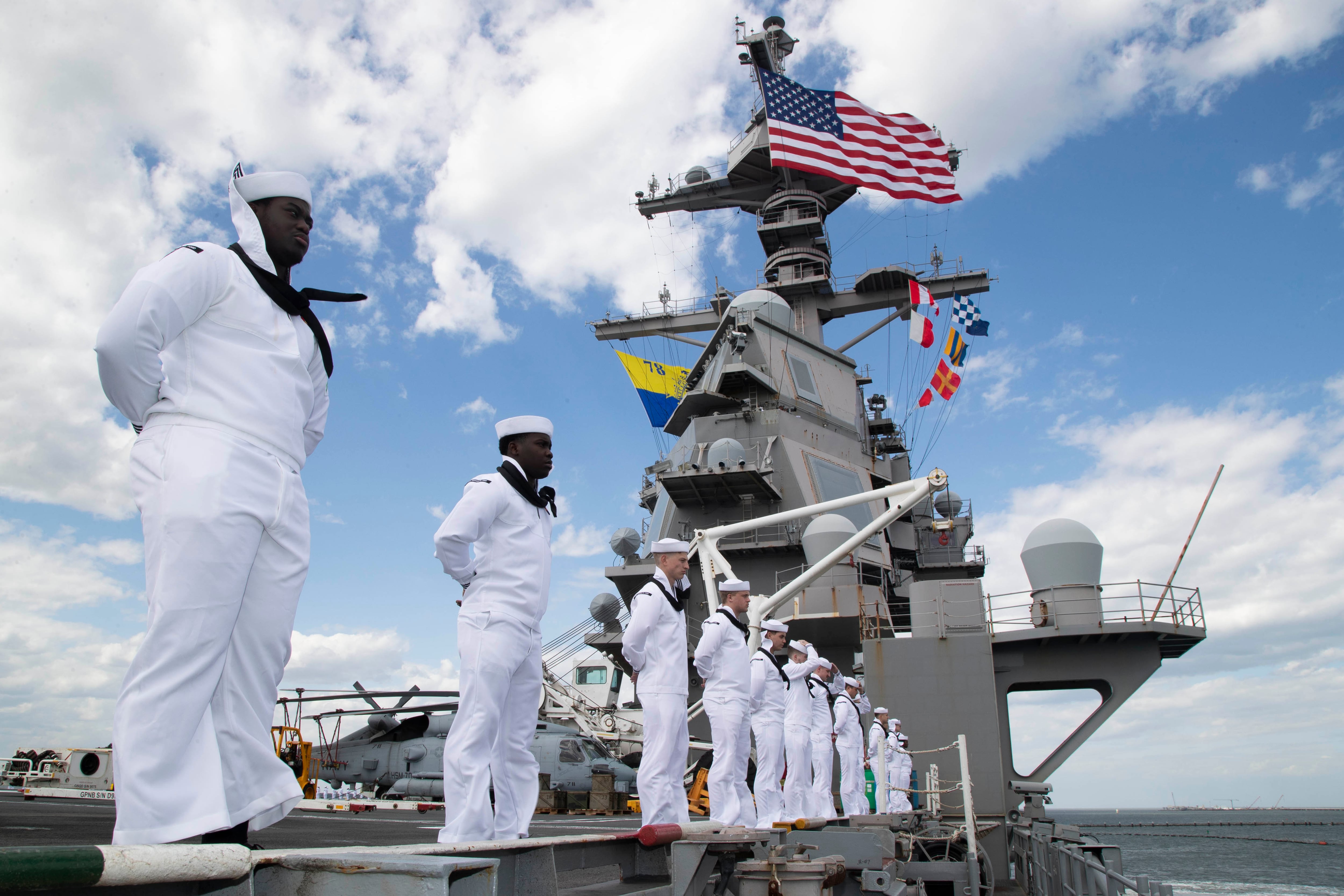In May, the aircraft carrier Gerald R. Ford pulled away from Naval Station Norfolk for its first full-length, combat deployment.
That maiden cruise was a long time coming. Originally supposed to deploy in 2018, the carrier faced high-profile cost overruns, delays and concerns about some of the dozens of new systems onboard.
Nonetheless, the ship left Virginia last spring and headed to the waters of U.S. European Command, ostensibly to steam on station as the Russia-Ukraine war raged nearby.
But six months in, and just weeks before the warship’s scheduled return home, the Pentagon ordered the carrier to head to the eastern Mediterranean following the Palestinian militant group Hamas’ Oct. 7 attack on Israel.
As that war raged, and officials worried about the war spilling into a broader regional conflict, Defense Secretary Lloyd Austin ordered multiple extensions to the carrier’s deployment, and the crew spent an extra 76 days at sea helping to ensure that the Israel-Hamas war didn’t boil over.
Along the way, the Ford proved the worth of its 23 brand-new carrier technologies, including a jet launch system that didn’t require steam. Leadership also learned that Ford’s high-tech amenities meant far fewer sailors were needed to run the flattop on deployment.

A largely green crew also found its sea legs along the way.
For Capt. Matt “Francis” Mulcahey, the Ford’s executive officer, observing the Ford’s sailors gain experience proved one of the most rewarding aspects while underway – given that it marked the first deployment for many of them.
“All the 23 new technologies are great. It’s amazing, and we gain all of these fantastic efficiencies, and capabilities,” Mulcahey told Navy Times. “But at the end of the day, you still have to have the hard work of that sailor to get it done. It doesn’t matter if it’s powered by steam, or it’s powered by electrons. It’s got to be a sailor that makes it happen. And it was really cool just to see them mature from young, fresh-faced sailors to salty operators during the deployment.”
To hear the Ford’s CO, Capt. Rick Burgess, tell it, those deployment extensions allowed the ship to participate in a meaningful mission, and came at a time when the ship and its crew were hitting their stride.
“I didn’t have a problem with the extensions, and a lot of people didn’t either, because we were doing something meaningful and important, and our country needed us,” Burgess told Navy Times in an exclusive interview aboard the Ford in Norfolk on Feb. 6.
“Timing wise, when we were redeployed to the eastern Med, we were at the tail end of deployment, we didn’t have a higher state of readiness, currency and proficiency at any other time than then,” he said.
In the end, the Ford turned out to be “the right ship at the right time,” Burgess said.
The extensions placed the Ford and its strike group at the frontlines of the conflict as it provided flattop deterrence against any other regional actors who might look to spark a broader war out of the Israel-Hamas conflict.
For example, the destroyer Hudner, part of the Ford’s carrier strike group, shot down an air drone in the Red Sea on Nov. 15 – the second of such engagements that continue presently.
RELATED

The Hudner and the destroyer McFaul, also part of the Ford strike group, conducted the tail end of their deployment in the Middle Eastern waters of U.S. Central Command to further support maritime security efforts in the region.
Additionally, the Dwight D. Eisenhower carrier strike group joined the Ford in October and the two conducted dual carrier operations with the U.S. 6th Fleet flagship Mount Whitney in the eastern Mediterranean.
The Eisenhower subsequently transited the Suez Canal in November, and is currently operating in CENTCOM’s area of operations – marking the first time a U.S. carrier has done so since the end of the Afghanistan war in 2021.
Ford finally returned to Norfolk in January, 239 days after originally departing its homeport.

The Ford’s crew didn’t prepare for a specific geographic region for the deployment and instead focused on training to carry out any mission it was needed for, which allowed sailors aboard the ship to familiarize themselves with all the new features, technologies, and design changes on Ford – the first of its class.
The Ford’s design situates its tower and command center for flight-deck operations further aft than Nimitz-class carriers. This provides additional space on the flight deck, so the air wing has more aircraft ready to go at any given point. This, along with the new technology aboard on the ship, aims to support a 30-percent higher sortie generation rate, according to the Navy.
[Aircraft carrier Ford embarks with full air wing for first time]
Although Burgess said it’s challenging to make a direct comparison to the Nimitz-class carrier sortie rates, he said the air wing faced no challenges conducting their mission set.
“Never at one point on the deployment were we unable to do whatever we were asked to do,” Burgess said. “So we were ready, and we have this amazing, efficient flight deck…it’s extraordinary, the possibilities.”
Altogether, the air wing conducted a total of 10,396 sorties and tracked 17,826 flight hours during the deployment, according to the Navy.
Among the 23 new technologies installed on the ship is the Electromagnetic Aircraft Launch System, or EMALS, to launch aircraft from the flight deck, a massive change from the traditional steam-powered catapult systems on Nimitz-class carriers that once provoked former President Trump’s vocal ire.
The ship also sports a dual-band radar system, which combines two radars that manage air traffic control, air search, navigation, and fire control — dramatically cutting down on the number of sailors needed to run the ship.
In total, the ship carries roughly 400 to 500 fewer sailors than a traditional Nimitz-class carrier, with approximately 4,250 sailors aboard the warship – not including the air wing and carrier strike group staff.
The deployment also proved an opportunity for the crew to write the playbook for future ships in the class, like the John F. Kennedy, Enterprise and Doris Miller, on how to operate in the future.
[USS Gerald R Ford hones air operations during initial deployment]
For example, the ship displaces more water due to design changes in the carrier’s wider flight deck – requiring the ship to adopt different practices for conducting underway replenishments, Burgess said.
“Because we have so much more displaced water laterally, we would start to suck in the other ship, and so we found out where it was comfortable,” Burgess said. “And it was just a little bit different than most people had been normally operating at. But then you have the hoses that connect and they’re normally designed to connect at this distance, instead of this distance. So that was all the learning stuff.”
The deployment also allowed the strike group to test out a new concept U.S. Fleet Forces Command head Adm. Daryl Caudle is piloting to augment strike groups with additional destroyers and cruisers mid-cruise that the strike group did not deploy with initially.
The Ford’s original carrier strike group included the destroyers Ramage, McFaul, and Thomas Hudner. But toward the end of the deployment, the destroyers The Sullivans and Delbert D. Black inserted themselves into the strike group so that the Ford strike group’s original destroyers could return home.
Burgess described the transition integrating those new destroyers as “seamless.”
“I couldn’t visually or tactically discern the difference between the destroyer that just left and went home to do more maintenance or homeport shift, and the one that replaced them,” Burgess said. “Everyone was really, really capable and fit right in.”
The Ford is now undergoing a maintenance availability, primarily to address software upgrades and other general touch-ups before deploying again.
But all told, the Ford arrived back in Norfolk in excellent shape, Burgess said.
The skipper attributed Ford’s prime post-deployment shape to the competency of his crew and the gentle Mediterranean weather that spared the ship from additional wear and tear.
“We returned home to home port fully mission capable – we could have stayed out there three, four more months…we kept the ship in fighting shape the entire time,” Burgess said. “And I’m sure there’s some new car smell as an advantage to that. It’s really nice for us now as we go through this maintenance, we’re just touching things up – a little upgrade here, little upgrade there.”





